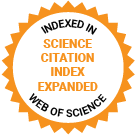Journal of Medical Internet Research
The leading peer-reviewed journal for digital medicine and health and health care in the internet age.
Editor-in-Chief:
Gunther Eysenbach, MD, MPH, FACMI, Founding Editor and Publisher; Adjunct Professor, School of Health Information Science, University of Victoria, Canada
Impact Factor 5.8 CiteScore 14.4
Recent Articles

Home spirometers have been widely implemented in the treatment of people with cystic fibrosis (CF). Frequent spirometry measurements at home could lead to earlier detection of exacerbations. However, previous research indicates that the long-term use of home spirometry is not well maintained by people with CF.

Digital health technology (DHT) has the potential to revolutionize the health care industry by reducing costs and improving the quality of care in a sector that faces significant challenges. However, the health care industry is complex, involving numerous stakeholders, and subject to extensive regulation. Within the European Union, medical device regulations impose stringent requirements on various ventures. Concurrently, new reimbursement pathways are also being developed for DHTs. In this dynamic context, establishing a sustainable and innovative business model around DHTs is fundamental for their successful commercialization. However, there is a notable lack of structured understanding regarding the overarching business models within the digital health sector.

The mental health crisis among college students intensified amid the COVID-19 pandemic, suggesting an urgent need for innovative solutions to support them. Previous efforts to address mental health concerns have been constrained, often due to the underuse or shortage of services. Mobile health (mHealth) technology holds significant potential for providing resilience-building support and enhancing access to mental health care.

Intensive care units (ICUs) handle the most critical patients with a high risk of mortality. Due to those conditions, close monitoring is necessary and therefore, a large volume of data is collected. Collaborative ventures have enabled the emergence of large open access databases, leading to numerous publications in the field.


Chronic kidney disease (CKD) imposes a significant global health and economic burden, impacting millions globally. Despite its high prevalence, public awareness and understanding of CKD remain limited, leading to delayed diagnosis and suboptimal management. Traditional patient education methods, such as 1-on-1 verbal instruction or printed brochures, are often insufficient, especially considering the shortage of nursing staff. Technology-assisted education presents a promising and standardized solution, emphasizing the need for innovative and scalable approaches to improve CKD-specific knowledge and health literacy.




During the COVID-19 pandemic, information and communication technology (ICT) became crucial for staying connected with loved ones and accessing health services. In this scenario, disparities in ICT use may have exacerbated other forms of inequality, especially among older adults who were less familiar with technology and more vulnerable to severe COVID-19 health consequences.

Accurate classification of patient complaints is crucial for enhancing patient satisfaction management in health care settings. Traditional manual methods for categorizing complaints often lack efficiency and precision. Thus, there is a growing demand for advanced and automated approaches to streamline the classification process.
Preprints Open for Peer-Review
Open Peer Review Period:
-
Open Peer Review Period:
-
Open Peer Review Period:
-
Open Peer Review Period:
-


















